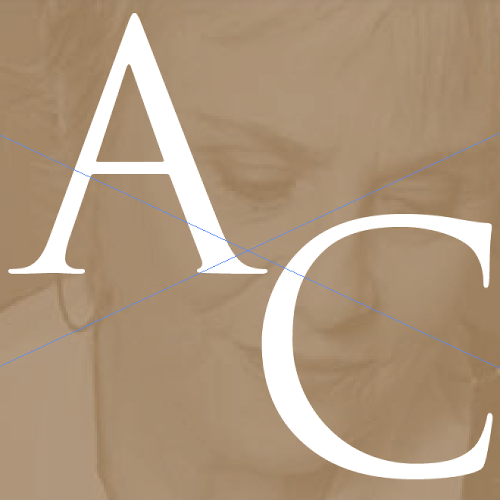Several years ago, I was driving along the Pacific Coast Highway on my way to the Getty Museum. Over the years, I was fortunate to build a beautiful relationship with Oscar-winning actress Olympia Dukakis (she is no longer with us), and she had invited me to attend
her reading of the Greek play, Lysistrata. It was an account of one woman’s extraordinary mission to end the Peloponnesian war by talking the other women into denying sex to their husbands and lovers until they stopped fighting.
As I sped along the highway, the ocean was to my left and I marveled at the colorful prisms that reflected off the water. It was so bright, it almost blinded me. I took it all in, excited that I was about see my friend . . . until I began obsessing over an email I forgot to
return. I stopped noticing the beauty of the ocean or thinking about the friend I was about to see. That email was all I could think about.
After about fifteen minutes, when I had worked myself into a frenzy, I pulled over, sent the email and got back on the road. Once again, I heard the waves thundering onto the shore, they made a powerful crashing sound and I was feeling good. . . until I turned into the
museum and got stressed about finding a place to park. I drove round and round, afraid I would never find the parking lot, when a guard arrived and showed me where to leave my car. I walked into the museum in excited anticipation.
The reading was inspiring, so was the time I got to spend with Olympia and when I got back home, I felt inspired . . . until I got a message on my phone that my Bluetooth thermostat was offline. What if I couldn’t find someone to help me fix it? What if it never
worked again? My worry overpowered the wonderful visit I’d just had and instead of feeling fulfilled, I was afraid that I’d end up with no heat in the middle of winter.
When the connection came back online after a short period of time, I was relieved and I relaxed . . . until I remembered that I was having trouble with my printer. What if I couldn’t get it to work before my current project was due? Do you get the picture?
Worries are waiting in line, determined to take their turn after the current one is resolved. We miss so much when our fears and obsessions take over. I had a birthday party with my closest friends and when they left, I was walking on air, thrilled that so many people loved me. . . until I remembered I had a meeting in the morning that I
was nervous about. All the joy went out of me and I went to sleep feeling stressed and anxious.
Like the examples above, when my mind flits around like an orangutan jumping from branch to branch and never settling
anywhere, I imagine a barrier that thrives on worst case scenarios. I call it my “worry wall,” a dizzying place that juggles me around, flips me upside down, teases me with false hope and covers the light with darkness. It’s connected to a lot of false stories, the “What if” and “I can’t “kind. At times I see a committee in my head that meets beside the wall, choosing what thoughts to burden me with in that moment and convincing me that I have no say in the matter. No place at the table. At other times, I wake up and the meeting is already in progress. They started without me and have unanimously decided how to make me uncomfortable that day.
I work hard to disarm this barrier. The first thing I do is become aware that my back is against the worry wall. I’m trapped in a familiar place that feels terrible but I’m not sure how to get out
of it so I turn to my tried and true method to cope. I focus on my breath. I inhale and exhale and it helps me slow down my thoughts, settle my anxiety and take inventory. I ask myself, Are these fearful stories lies or the truth? Am I stuck with the negativity or is there a way to deactivate it?
I find some comfort when I remember that the wall is porous, not solid. I search for the gaps where pinpoints of light peek through. Leonard Cohen wrote:
“There is a crack in everything.
That’s how the light gets in.”
I imagine fitting my fingers into the small openings, applying pressure and watching them get larger and larger until the wall dissolves and nothing is left but the light from the other side. This state of peace doesn’t usually stay with me for very long. I’m not that
good at maintaining it yet. But the more I’m determined to take down the wall, the clearer the path forward becomes.
When I was writing a book for Wendy Walker, former member of the White House Press corps and executive producer for the Larry King Show for 17 years, I interviewed a CNN reporter. He was standing
close by when Reagan said for all the world to hear, “Mr. Gorbachev, tear down this wall.” The reporter turned to his cameraman and said, “Yeah, like that’s going to happen.” A couple of years later, the German people tore down the barrier that divided East from West.
The worry wall’s job is to intimidate you with nothing to offer you but stress and regret. Your job is to face your fears and remember that you are more powerful than any barrier that tries to keep your peace at bay. Spiritual teacher Eckhart Tolle says, “Worry pretends
to be necessary, but it serves no useful purpose.” So take the time to dig deep and recognize what’s causing you unnecessary pain, place your attention on your breath and tear down that wall.


Recent Comments